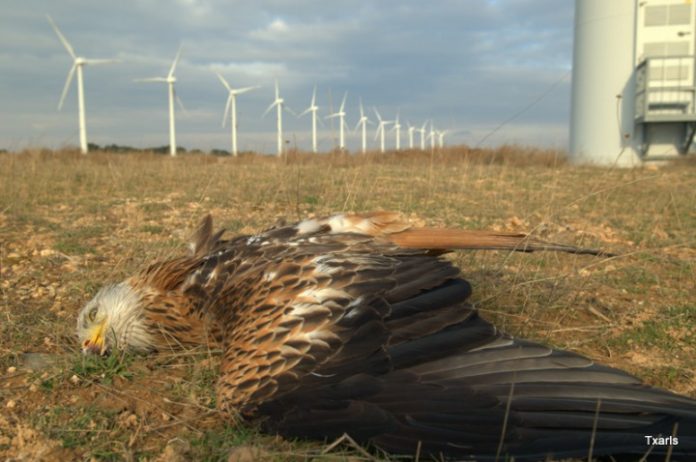A citizens group calling itself Citizens for Responsible Energy (Citizens) is suing to halt the siting of row of 612-foot-tall wind turbines on top of mountains in Botetourt County, Virginia.
One lawsuit brought by Citizens challenged the Virginia Department of Environmental Quality’s (DEQ) approval of the project. In particular Citizens challenged the DEQ’s finding that the project would not harm natural resources, despite ordering the turbines to be turned off at night in the warmer months to protect flying bats.
Citizens says the large wind facility’s massive turbines will mar the scenic landscape, endanger wildlife, and harm human health due to the low-frequency noise the turbines generate.
No Extension Merited
Citizens’ second lawsuit, filed November 10, disputes the county Board of Zoning Appeals decision to allow the Rocky Forge Wind industrial facility to move forward despite the county zoning administrator’s determination the project missed filing deadlines for the project’s approval.
Citizens claims the board improperly overturned the county zoning administrator finding Rocky Forge did not qualify for a statewide extension of zoning deadlines for projects delayed by the coronavirus pandemic.
“The BZA’s pronouncement includes no reasoning, argument, or justification; it is hardly recognizable as the outcome of a deliberative, public-facing quasi-judicial process,” the lawsuit states.
Although the Virginia Freedom of Information Act allows public bodies to meet behind closed doors to seek advice on “specific legal matters,” such matters were never identified, the lawsuit states.
The lawsuit names the county’s board of supervisors, Rocky Forge Wind, and a trust established by the family of Jerry Fraley, which is leasing the nearly 7,000 acres where the project is to be located, as defendants in the case.
‘Produce Harmful Ifrasound’
Opponents of the wind project are right to be concerned about the effect it will have on the local environment and human health, says physicist John Droz, Jr., founder of the Alliance for Wise Energy Decisions.
“Wind turbines unquestionably produce significant harmful infrasound,” said Droz. “According to a 2007 study by Eja Pedersen of the Sahlgrenska Academy, Göteborg University, wind turbine noise is easily perceived by humans even at low SPLs.
“Adverse reactions may include stress-related symptoms due to prolonged physiological arousal and hindrance to psychophysiological restoration,” Droz said. “Studies from independent experts have also concluded that industrial wind projects can harm wildlife and livestock animals.”
Climate Concerns
For those who believe humans are causing climate change, wind power can actually make it worse due to the mining needed for the rare minerals to make turbines batteries and magnets and the fact that the required back-up power sources are forced to operate at less than peak efficiency, says Droz.
“In my report “Taking the Wind Out of Climate Change, I show that wind energy requires an augmenting source of electricity, which is most often natural gas,” said Droz. “The wind-plus-gas package required to provide continuous energy can produce more CO2 than gas by itself, meaning, if human emissions are in fact causing global warming, adding wind turbines into the mix can actually make climate change worse.”
Kevin Stone (kevin.s.stone@gmail.com) writes from Arlington, Texas


























